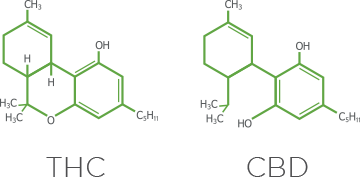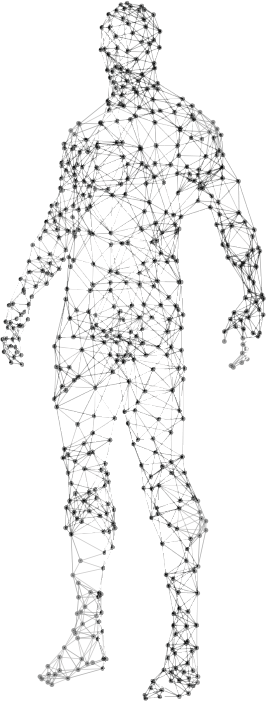

INFORMATION on MEDICAL CANNABIS

What is Medical Cannabis?
Cannabis is a genus of plant with a number
of different species. Sativa and indica are the
two most common cannabis species. The term
“medical cannabis” is used to describe products
derived from the whole cannabis plant or its
extracts containing active cannabinoids
and terpenes.
The major active and commonly known cannabinoid compounds are tetrahydrocannabinol (THC) and cannabidiol (CBD). These compounds work together to yield the best results. They are opposite to each other yet complimentary. The key is to find the ratio that is effective for the patients needs.
The major active and commonly known cannabinoid compounds are tetrahydrocannabinol (THC) and cannabidiol (CBD). These compounds work together to yield the best results. They are opposite to each other yet complimentary. The key is to find the ratio that is effective for the patients needs.
THCCBD
What Is the Difference Between Medical and Recreational Cannabis?
Patients taking cannabis for medical reasons
generally use cannabinoids to alleviate
symptoms while minimizing side effects, whereas
recreational users may be taking cannabis for
euphoric effects.
Medical cannabis is authorized by a prescriber and your pharmacist provides education, guided dosing management and monitoring to help ensure safe and appropriate use.
Medical cannabis is obtained through a Licensed Producer who is authorized and regulated under federal and provincial laws to produce medical cannabis and adhere to good production practices, quality assurance and testing.
Medical cannabis is authorized by a prescriber and your pharmacist provides education, guided dosing management and monitoring to help ensure safe and appropriate use.
Medical cannabis is obtained through a Licensed Producer who is authorized and regulated under federal and provincial laws to produce medical cannabis and adhere to good production practices, quality assurance and testing.
What Are Potential Uses For Medical Cannabis?
 Medical cannabis may be used to alleviate symptoms for a variety of conditions. There is limited, but
developing clinical evidence surrounding its safety and efficacy, and it does not currently have an
approved Health Canada indication. Medical cannabis may be used for the management of symptoms
associated with a wide variety of conditions that have not responded to conventional therapies such as[2]:
Medical cannabis may be used to alleviate symptoms for a variety of conditions. There is limited, but
developing clinical evidence surrounding its safety and efficacy, and it does not currently have an
approved Health Canada indication. Medical cannabis may be used for the management of symptoms
associated with a wide variety of conditions that have not responded to conventional therapies such as[2]:
Chronic pain
Arthritis and musculoskeletal disorders
Anxiety and depression
Mobility improvement in movement disorders (i.e. Parkinson’s disease, Tourette’s syndrome & Huntington’s disease)
Sleep disorders
Post-traumatic stress disorder (PTSD)
Treatment of resistant nausea and vomiting
Alzheimer’s disease and dementia
Muscle spasm due to multiple sclerosis (MS), amyotrophic lateral sclerosis (ALS) & spinal cord injury
Inflammatory bowel diseases (IBD; i.e. Crohn’s disease and ulcerative coltis, IBS)
Epilepsy (seizures)
Who Should Not Use Medical Cannabis?
Cannabis should not be used if you[1]:
- Are under the age of 25
- Are allergic to any cannabinoid or to smoke
- Have serious liver, kidney, heart or lung disease
- Have a personal or family history of serious mental disorders such as schizophrenia, psychosis, depression, or bipolar disorder
- Are pregnant, are planning to get pregnant, or are breast-feeding
- Have a history of alcohol or drug abuse or substance dependence
Talk to your pharmacist and health care practitioner if you have any of these conditions. There may
be other conditions where this product should not be used, but which are unknown due to limited
scientific information. Cannabis may interact with several drugs. Make sure to tell your pharmacist
and health care practitioner which prescription drugs, non-prescription drugs or herbal products
you are currently taking.
What Are Potential Side Effects Of Medical Cannabis?
medical cannabis used and the concentration of cannabinoids in the cannabis product; the frequency of
cannabis use; the patient’s age; the medical conditions being treated; previous experience with cannabis or
cannabinoids; and the use of other prescription or non-prescription drugs. The information on side effects
associated with medical use of cannabis is limited. Some of known side effects of use of cannabis are
intoxication-like reactions including: dizziness, dry mouth, mood-alterations, insomnia, increased heartbeat
and fatigue. This is not a complete list of side effects. For more information, please read Health Canada
“Consumer Information - Cannabis (Marihuana, marijuana)”[1] available online.
How Do I Take Medical Cannabis?
Cannabis can be smoked, vaporized, taken
orally, sublingually, topically or rectally. Different
routes of administration will result in different
pharmacokinetic and pharmacodynamic
properties of the drug.
The two most common forms of administering medical cannabis are ingestion of cannabis oil and vapourization of dried cannabis.
The two most common forms of administering medical cannabis are ingestion of cannabis oil and vapourization of dried cannabis.

Vaporizing (Inhaling)
Vapourizing medical cannabis can provide:
- Rapid onset of action occurs at 1-5 minutes and lasts generally 2-4 hours (short-term relief)
- Smaller amounts of toxic by-products vs. smoking
- Greater bioavailability vs. ingesting

Oral Ingestion
Oral ingestion of medical cannabis can provide:
- Slower onset and longer duration of action from 30 minutes to 3 hours and can last generally 8+ hours
(long-term relief) - Greater precision and consistency of dosing
- Easy to administer in mouth droplet or capsule
Start Low And Go Slow
Whether using a vapourizer or ingesting edible
oil, the general guideline is to start low and
go slow. Start with a very low dose and stop
therapy and tell your pharmacist or healthcare
practitioner if any unacceptable or undesirable
side effects occur.
Is Medical Cannabis Covered Through Insurance?
Some insurance plans may cover medical cannabis.
Check with your provider.
How Do I Obtain Medical Cannabis?
STEP
01
Talk to your Pharmacist and, if medical
cannabis is right for you, complete the
Licensed Producer’s Registration and
the Medical Consultation forms
STEP
02
Your Pharmacist can help you schedule
your appointment and will forward
the necessary documentation to an
authorized healthcare practitioner for a
medical consultation.
STEP
03
See your healthcare practitioner for a
medical assessment. Your healthcare
practitioner will complete and submit
the original Medical Document to the
Licensed Producer and forward a copy
to your pharmacist.
STEP
04
Follow-up with your pharmacist
to review your medical cannabis
treatment plan. Your pharmacist will
also assist you with placing
your order for medical cannabis with
the Licensed Producer and schedule
a follow-up appointment to review
your progress.


